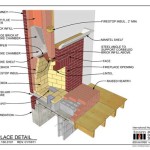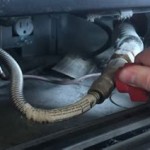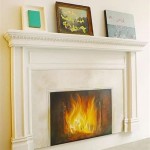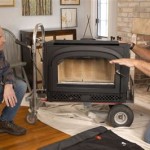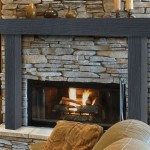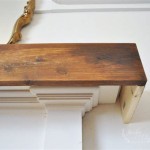```html
Understanding Gas Fireplace Glass: A Comprehensive Guide
Gas fireplaces offer a convenient and aesthetically pleasing alternative to traditional wood-burning fireplaces. Central to their appeal is the glass panel that encloses the flames, providing safety, containing heat, and offering an unobstructed view of the fire. However, not all glass is created equal, and understanding the nuances of gas fireplace glass is crucial for ensuring safety, optimal performance, and longevity of the appliance.
This article delves into the various aspects of gas fireplace glass, covering its types, safety considerations, maintenance routines, and troubleshooting common issues. The information presented is intended to provide a comprehensive understanding of this essential component of gas fireplaces.
Types of Glass Used in Gas Fireplaces
The glass used in gas fireplaces is specifically engineered to withstand the high temperatures generated by the burning gas. Regular window glass or other common types of glass are not suitable and can shatter or explode under such conditions. Two primary types of glass are commonly used: tempered glass and ceramic glass.
Tempered Glass: Tempered glass is created through a process of extreme heating and rapid cooling, resulting in a glass that is significantly stronger than standard annealed glass. It is approximately four to five times more resistant to impact and thermal stress. When tempered glass breaks, it shatters into small, relatively harmless pieces, reducing the risk of serious injury. While tempered glass is suitable for many gas fireplace applications, especially those with lower operating temperatures or larger enclosures where heat distribution is more even, it is not as heat-resistant as ceramic glass.
The primary advantage of tempered glass is its lower cost compared to ceramic glass. It is often used in decorative gas fireplaces or those with a more open design. However, it is essential to consult the manufacturer's specifications to ensure that tempered glass is appropriate for the specific fireplace model and its intended use.
Ceramic Glass: Ceramic glass, also known as pyroceramic glass, is a specialized type of glass designed to withstand extremely high temperatures without cracking or shattering. It is significantly more heat-resistant than tempered glass and is the preferred choice for gas fireplaces that generate high levels of heat, particularly those used for primary heating purposes. Ceramic glass is engineered to maintain its structural integrity and clarity even under intense thermal stress.
The key characteristic of ceramic glass is its extremely low coefficient of thermal expansion. This means that it expands very little when heated, minimizing the stress on the glass and reducing the risk of cracking. While ceramic glass is more expensive than tempered glass, its superior heat resistance and durability make it a worthwhile investment for high-performance gas fireplaces. It is commonly found in direct-vent fireplaces, inserts, and stoves where the glass panel is directly exposed to the flames.
It is crucial to only use the type of glass specified by the fireplace manufacturer. Substituting different types of glass can compromise safety and void the warranty. The manufacturer's instructions will clearly indicate the appropriate type of glass for the specific model.
Safety Considerations Regarding Gas Fireplace Glass
Safety is paramount when dealing with gas fireplaces, and the glass panel plays a critical role in preventing burns and containing the fire. Several safety precautions must be observed to ensure the safe operation of the fireplace.
Surface Temperatures: The surface of the gas fireplace glass can become extremely hot during operation, posing a significant burn hazard. It is imperative to keep children and pets away from the fireplace while it is in use. A safety screen or barrier should always be used to prevent accidental contact with the hot glass. These screens are designed to reduce the surface temperature of the exterior, making it safer for individuals to be near the fireplace.
Glass Integrity: Regularly inspect the glass panel for any signs of damage, such as cracks, chips, or scratches. Even small imperfections can weaken the glass and increase the risk of failure under thermal stress. If any damage is detected, the glass should be replaced immediately by a qualified technician. Operating a gas fireplace with damaged glass is extremely dangerous and can lead to serious injury.
Proper Ventilation: Ensure that the gas fireplace is properly vented according to the manufacturer's instructions. Inadequate ventilation can lead to a buildup of carbon monoxide, a deadly odorless gas. The glass door should never be removed or modified in a way that obstructs the ventilation system. A properly functioning ventilation system is crucial for maintaining safe indoor air quality.
Professional Installation and Maintenance: Gas fireplaces should only be installed and serviced by qualified technicians who are licensed and experienced in working with gas appliances. They can ensure that the fireplace is installed correctly, that the gas connections are secure, and that the ventilation system is functioning properly. Regular maintenance, including cleaning the glass and inspecting the burner assembly, is essential for safe and efficient operation.
Use of Approved Replacement Parts: When replacing the glass panel, always use replacement parts that are specifically approved by the fireplace manufacturer. Using non-approved parts can compromise the safety and performance of the fireplace. Counterfeit or generic parts may not meet the required safety standards and can lead to dangerous situations.
Maintenance and Cleaning of Gas Fireplace Glass
Proper maintenance is essential for preserving the clarity and appearance of gas fireplace glass and ensuring its longevity. Regular cleaning can remove soot, dust, and other debris that can accumulate on the glass surface over time.
Cooling Down: Always allow the fireplace to cool completely before attempting to clean the glass. The glass surface can remain hot for a considerable amount of time after the fireplace has been turned off. Touching hot glass can result in severe burns. To ensure the glass is cool enough to touch, wait several hours or overnight before starting the cleaning process.
Cleaning Agents: Use a specialized gas fireplace glass cleaner that is designed to remove soot and other deposits without damaging the glass. Avoid using harsh chemicals, abrasive cleaners, or window cleaners, as these can scratch or etch the glass surface. Some fireplace cleaners are specifically formulated to remove stubborn stains and buildup. Follow the manufacturer's instructions for the cleaner carefully.
Cleaning Procedure: Apply the cleaner to a soft, lint-free cloth and gently wipe the glass surface. Avoid spraying the cleaner directly onto the glass, as this can cause streaks or damage the surrounding fireplace components. Use a circular motion to loosen any stubborn deposits. Once the glass is clean, use a clean, dry cloth to wipe away any remaining residue. For heavily soiled glass, multiple applications of the cleaner may be necessary.
Prevention: Preventative measures can help minimize the buildup of soot and other deposits on the glass. Ensure that the fireplace is properly vented and that the burner assembly is clean and functioning correctly. Periodically check the gas pressure and adjust it as necessary to ensure optimal combustion. A properly tuned fireplace will produce less soot and other byproducts.
Frequency: The frequency of cleaning depends on the usage of the fireplace and the type of fuel being burned. Gas fireplaces that are used frequently or those that burn a fuel with a higher soot content may require more frequent cleaning. A general guideline is to clean the glass every few weeks or as needed to maintain its clarity.
Addressing Stubborn Stains: For stubborn stains that are difficult to remove with regular cleaning, consider using a specialized glass polishing compound. These compounds are designed to gently remove surface imperfections and restore the glass to its original clarity. Follow the manufacturer's instructions carefully when using these products. In some cases, professional cleaning may be necessary to remove particularly stubborn stains.
By following these maintenance and cleaning guidelines, the gas fireplace glass can be kept in optimal condition, ensuring a clear view of the flames and prolonging its lifespan.
```
Studio Glass Gas Fires Gazco Built In Contemporary Fireplaces

Modern Fireplaces With Glass Safety Barrier Or Cool Touch

Glass Fireplace Doors

Studio Glass Gas Fires Gazco Built In Contemporary Fireplaces

Fireplace Glass For Fire Pits And Fireplaces

How To Clean The Glass On Your Gas Fireplace

Fireplace Glass For Fire Pits And Fireplaces

S Fireplace Stove In Paramus New Jersey Kjb Fireplaces

Bhd4pgn Napoleon Fireplaces Ascent Peninsula With Glass Bed Natural Gas Fireplace Big George S Home Appliance Mart

34 Modern Fireplace Designs With Glass For The Contemporary Home Decoist
Related Posts


